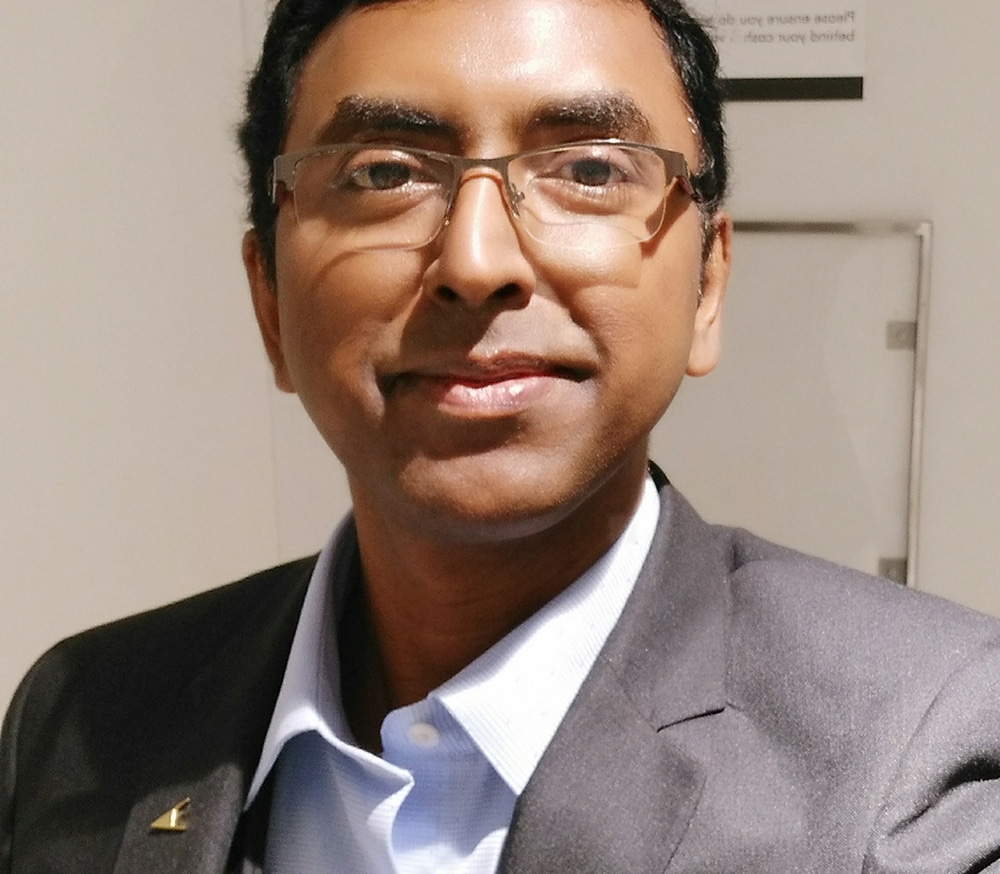As COVID-19 was ramping up worldwide, NAU graduate student Sam Sarkar was in India at an academic conference. The trip wasn’t supposed to last for four months.
But it wasn’t until June that Sarkar, a doctoral student in NAU’s Department of Applied Physics and Materials Science, could get a flight back to Arizona. With COVID-19 rampant, he wasn’t sure he’d be allowed back into the United States even while on the flight back.
When he’d finally arrived, done the necessary testing and quarantining and returned to the lab, eager to pick up his research, Sarkar got another surprise: The machines in the physics lab needed to be repaired before he could get back to work.
So that was his 2020. But the materials scientist is back in the swing of his research, ready to tackle questions most don’t even know to ask.
Sarkar, who is on his third graduate degree—he has master’s degrees in computer science and nanotechnology—studies nanotechnology; his primary research focus is developing ways to control circular dichroism (CD) at ultraviolet wavelengths by changing the morphology of chiral nanostructures.
Essentially, light can exist in two states of “circular polarization,” where the electric field can rotate as it propagates in a clockwise or counterclockwise fashion. Materials exhibiting CD preferentially absorb one of these polarization states over the other. Sarkar, working with physics professors John Gibbs and Ryan Behunin, showed through experiments and simulation that nanohelices exhibit massive and controllable CD. Of particular relevance is that the demonstrated CD is in a range of frequencies that are highly relevant to biology that may enable new biomedical applications.
How is light right- or left-handed? Read the study, authored by Sarkar, Behunin and Gibbs.
Sarkar’s second line of research is in the area of molecular sensing using CD spectrometry. His goal is to find regimes where CD spectra is extremely sensitive and can detect changes in a small number of glycerol molecules. He also is attempting a novel p-n junction that exploits certain optical phenomena, which may be able to create a new type of diode with lower OFF current.
Gibbs, who has been working with Sarkar for three and a half years, said the doctoral student has been taking the lead with research in recent years, looking at both fundamental science and possible applications. Sarkar has a long history in research, and his curiosity and willingness to tackle questions and problems help move his work forward.
“While Sam’s previous experience in academia and in industry—including starting at least one company that I know about—gives him an unparalleled advantaged for a graduate student, he is truly outstanding due to his hard work, creativity and intelligence,” Gibbs said.
Sarkar also is working with Behunin on a tunable lasers project that they hope will make a much better laser material. Currently, lasers operate at a single wavelength; this project should help create lasers that are tunable and cheaper, which will make lasers more accessible. Sarkar’s role in that work is to supply the nanohelices to create a metafluid.
“His scientific abilities are top-notch and his work ethic is untiring,” Behunin said. “When Sam says he will do something, it will get done and it will get done with the highest level of care.”
Other researchers are working on applications of chiral nanostructures and applying it in other applications, such as detecting cancer.
“That’s the nature of research—you try to advance the field a little bit,” Sarkar said. “What’s not to like about it? You get to do research with some good applications.”
Coming to Flagstaff
Gibbs recruited Sarkar to NAU from the Indian Institute of Science, one of the premier research institutes in India, which was founded by C. V. Raman, who won the Nobel Prize for the discovery of the Raman effect. Sarkar’s adviser in India had worked at the same institute in Germany where Gibbs worked as a postdoctoral scholar, and he connected Gibbs and his promising master’s student.
In addition to his graduate work, Sarkar branched out entrepreneurially in India before coming to NAU. Putting his computer science background to work, Sarkar started his own company based on the idea that business owners shouldn’t need a doctorate in statistics to understand and use machine learning. Nanobi Analytics helps businesses track their data, such as ticket sales, bus routes or email open rates, pulls in other data and puts all of it into context, automatically discovering the connections and providing analytics in a way that’s easy for the non-savvy to understand and put to use. The company won the Microsoft BizSpark India Startup Challenge 2013, rising to the top of more than 700 submissions.
“Bringing all of the data together to use it in a way that businesses can easily digest and look into is innovative,” Sarkar said.
His educational experience here has kept him busy not only in the lab, but in other aspects of his work as well. For as broad as his work experience was that led him here, one aspect of a doctoral program surprised him.
“One thing I’ve learned is that I naively used to think that just doing the experiment is the main thing and writing is the easy part,” he said. “Now I’ve realized it’s exactly the other way around. Writing is way harder, and English not being my first language doesn’t help.”

(928) 523-8737 | heidi.toth@nau.edu



